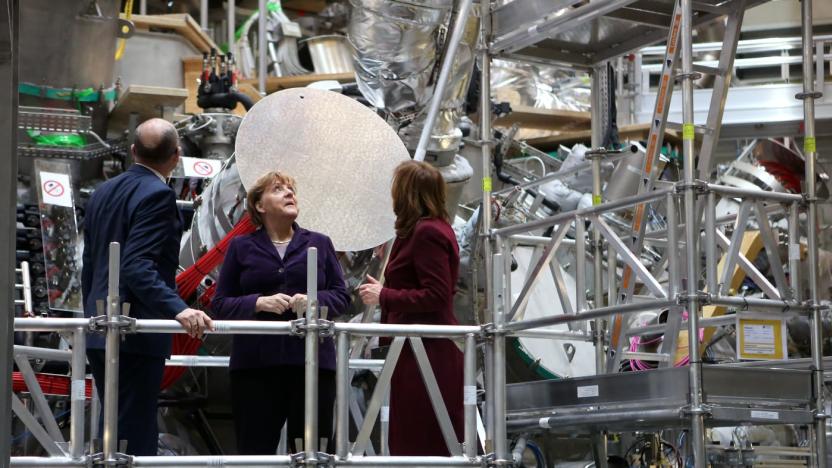FusionReactor
Latest

Scientists may have solved a key barrier to fusion power
We've been working towards nuclear fusion, a near-limitless source of clean energy, for the past six decades, and now scientists have made a major breakthrough. A new article published in Physical Review Letters details how to solve a dangerous issue with runaway electrons that has, until now, posed a major problem for fusion reactors.

Fusion reactor endurance record hints at our energy future
Wondering why a fusion reactor isn't powering your home right now? There are numerous reasons, but one of the biggest is simply keeping the necessary super-hot plasma in an ideal state for energy generation -- it doesn't last that way for long. South Korea, however, just edged closer to that goal. The country's KSTAR (Korean Superconducting Tokamak Advanced Research) reactor team claims to have set an endurance record for operating with "high performance" plasma. The feat only lasted for 70 seconds, but that's still a "huge step forward," according to the National Fusion Research Institute.

Twisty fusion reactor goes online after 19 years of work
Germany just took fusion power one big, important step forward. The country's Max Planck Institute for Plasma Physics has just switched on Wendelstein 7-X, the first large fusion reactor based on a twisty stellarator design. It's only producing hydrogen plasma at the moment and won't actually generate energy, but power isn't really the point. Instead, it'll serve as proof that stellarators could provide energy while operating continuously, unlike current (tokamak-based) fusion reactors that operate in short pulses. They should be safer, too.

Twisty reactor hints at a future of practical fusion power
Many fusion reactors are based on a tokamak design, which uses an electrical current to twist a superheated plasma's electrons and ions into a three-dimensional loop. That's good for containing the plasma, but it's still not the safest design -- if the current fails or there's a magnetic disruption, you have a serious problem on your hands. However, scientists at the Max Planck Institute may have a more practical alternative. They've recently completed Wendelstein 7-X, the first large reactor based on a stellarator concept that relies on a cruller-like shape for the twisting action instead of a current. That's considerably safer than a tokamak, and the supercomputer-guided design should iron out the containment problems that have plagued stellarators until now.

Microsoft manager teams up with teens to build a fusion reactor in his garage (video)
Normally, if a grown man talks about building a fusion reactor and wants your 13-year-old to hang out in his garage, we'd expect you to smile, back away slowly, and perhaps alert the authorities. But, if that man is Microsoft program manager Carl Greninger there's no need to run. The science fanatic recruited a team of teens, as young as 13, and worked with them to build a Farnsworth–Hirsch Fusor -- a (comparatively) simple nuclear reactor that smashes together atoms and produces neutrons. Check out the nearly 20-min video after the break to watch a bunch of high school kids generate ball of ionized plasma. And to think, all that's in your garage is that '65 Mustang you swear you're gonna restore one day.


